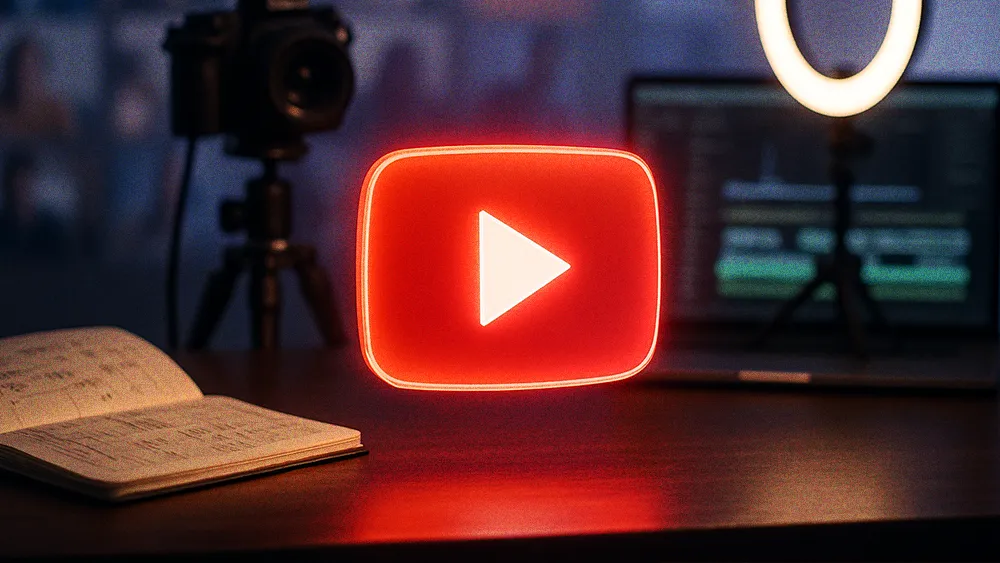


YouTube's new collaboration feature blurs the line between ads and content, so brands can become part of the storytelling rather than interrupting it.
Marketing strategist Steven Page explains why success requires authentic, data-driven partnerships that pass the "ad smell test."
The model could redefine campaign economics, offering cost savings, shared risk, and long-term efficiency for brands.
The line between content and commercial is blurring. With YouTube's new collaboration feature, brands and creators can publish a single, co-owned video native to a person's feed. Now, instead of interrupting creators, brands can become part of the storytelling itself. But in an age where viewers fast-forward through anything that resembles an ad, any new model must first overcome audience skepticism to succeed.
According to Steven Page, a fractional CMO and a board member for the East Bay Network of the California Credit Unions, YouTube's new collaboration feature could change everything. After spending 24 years at Shell in brand marketing and operations, he has since led marketing, digital, and IT across credit unions and regulated financial services. That mix of global brand scale, regulated-industry leadership, and board governance shapes Page's expertise as a marketing strategist today. From his perspective, the shift toward integrated content could redefine audience trust, campaign economics, and what it means to buy media in a creator-first world.
Sniffing out fakes: Passing the audience sniff test means moving beyond forced product placements and toward genuine connection. Most viewers can spot an inauthentic cash grab a mile away. But they also reward genuine content, Page says. "Because it's one piece of content, I think it passes the audience's ad smell test. When viewers see an ad or something they don't like, they will fast-forward through it."
Keeping it real: Strong, authentic storytelling can be even more effective than traditional ads, Page explains. When brands integrate a message into content an audience already loves, viewers tend to welcome it. "Authenticity still rules. It always will rule on YouTube. And if it's not authentic, the audience is gonna be like, ‘Nope, not interested.’"
Success in this era means doing the homework to partner with creators based on deep audience analytics and shared values, not follower counts. Here, Page offers the hypothetical example of a car company and a national parks channel. The pair might seem mismatched at first, but focusing on a simple shared utility, like a glass roof for better views or a specific door design for easier access, makes this type of collaboration feel natural.
Data is destiny: To determine if a partnership delivers meaningful value, Page recommends a data-driven process. "It's going to be very data-driven. You will need to put your data scientist hat on and ask, 'What makes sense and how can we do it?'"
The culture club: A data-driven approach also encourages a shift from short-term influencer marketing to deeper, ongoing relationships. "It's going to be about co-creating a culture with creators who define it." Eventually, a serialized approach can transform marketing from a repetitive annoyance into anticipated entertainment. "For example, we can slowly build a series together with a 'Chapter One, Chapter Two' approach. Now it's interesting. Now I'm anticipating more." The more invested viewers become in the narrative, the more eager they'll be for the next installment, rather than skipping past a blatant ad.
Alternatively, a brand can assemble a dream team of collaborators to legitimize the project, like celebrities and trusted community leaders such as the mayor or police chief. These partnerships create content with outsized reach, tailored to the brand and audience. But that ROI doesn't come without serious operational hurdles.
YouTube's current monetization backend raises questions about how to split revenue fairly when follower counts are lopsided, Page continues. With partners forced into complicated off-platform agreements, there is little recourse if someone doesn't pay.
Winning from the start: For the ad executive, a collaborative model also helps the bottom line. By competing directly with traditional ad spend, it offers a more efficient and less risky allocation of capital. Meanwhile, co-producing a single piece of content can help brands pool resources, share financial risk, and build a reusable creative asset. This creates a three-pronged business case for adoption. "We don't have to have two ads because it's a collaboration now. Maybe it's $50,000 from one budget and $50,000 from the other budget, for example. We're already winning before the content's even out there and the risk of flopping is much lower."
The power of this model lies in the way trust can flow, Page concludes. When a trusted creator collaborates with a brand, that trust can be transferred. By embedding the brand within a story people choose to watch, companies can build trust in a way that is often difficult for a 30-second spot to achieve. While not a silver bullet, he does see the model's potential to rewire advertising. "I don't want to say it would be a commercial killer. But in a way, it's almost a commercial killer."